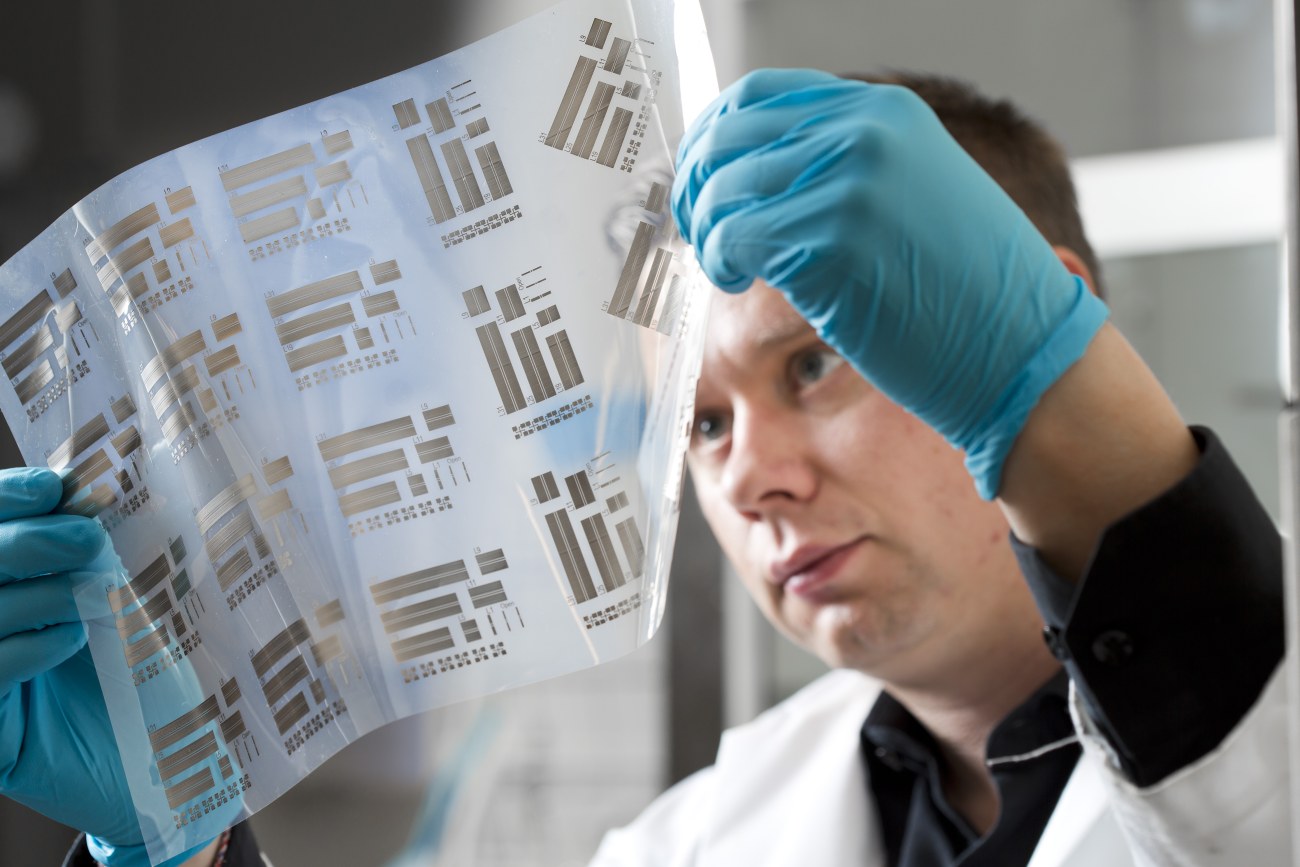
Electronics and Embedded Systems research structure cluster
Electronics enables modern society. Our goal is to develop new technologies and methods for manufacturing electronics in sustainable, economical and globally efficient processes.
Our research infrastructure includes a wide range of equipment to research and develop electronics and embedded systems, including printed electronics, thin-film devices and circuits, energy harvesting, low-level software, and system design in industrial, healthcare, and consumer environments.
The area of our laboratory is about 250 m2, of which 60 m2 cleanroom. We have equipment for ink jet printing (Ceraprinter F-serie, Super-fine Inkjet –printer and four Dimatix printers), gravure and flexo printing as well as lamination (Schläfli Challenger 174) and screen printing (Ekra Professional). For rapid prototyping we have an advanced 3D printer (Neotech PJ15X BT)
Inert gas (nitrogen) filled glove boxes are used for developing and characterizing moisture or oxygen sensitive components. In the glove boxes we have an atomic layer deposition system (ALD), a probe station, a Dimatix-printer,a spin coater and a vacuum hot plate.
For electrical characterization we have probe stations, a semiconductor analyzer, potensiotat and equipment for measuring supercapacitors and batteries. Also ferro and piezoelectric properties can be defined as well as mechanical properties of functional materials.
Printed and hybrid electronics

Printed and hybrid electronics research theme focuses on research and development of flexible and stretchable electronics, wearable and skin-mountable (e.g. e-tattoos), sensors, 3D and structural electronics in many application domains.
Strong emphasis is placed on scalable, low-cost manufacturing methods such as printing as well as the integration of printed components and circuits with more conventional component assembly methods. We have modern printing infrastructure.
Embedded systems
The research theme on Embedded systems is a multidisciplinary field with strong emphasis on applying the latest research results and technologies for solving a multitude of demanding development tasks. Focus is on ambient intelligence and augmented reality. Ambient intelligence refers to all information technology embedded into our everyday environments such as sensors, actuators, user interfaces, communication, IoT and services. These can be applied in e.g. smart home, health care, automotive or industrial settings. Augmented reality is the ultimate user interface. Powerful embedded computing systems add, remove and forge stimuli before the user senses them, and appear to bend the very fabric of reality. Interactive displays floating in thin air or objects cloaking themselves with invisibility are no longer science fiction, but the cutting edge of research found at TAU.
Electronics and energy
Energy harvesting and management systems transform energy available in the environment into electrical energy to be stored locally and utilized to power small low-power electronic devices, IoT-nodes or sensor networks. Energy is harvested from dynamic processes in the environment, such as vibration, mechanical deformations, temperature differences, or electric/magnetic fields. The work focuses on developing new harvesters, supercapacitors for energy storage, low-power electronics, and energy management. The research is based both on empirical testing and multiphysics simulation.
Energetic systems combine electronic systems with energetic materials. These silent sentinels are prevalent and essential to the safety of our everyday life in a modern society. The control of energetic materials presents unique demands for the reliability of the electronics and the embedded software. For example, the car air bag needs to operate at precisely the right moment, but it must not operate otherwise. This is a recurring trait to most energetic systems: the preferred outcome is them not to act.
Thin-film electronics
While CMOS technology continues to be the dominant way of implementing electronics, there are many applications where thin-film circuitry can offer a significant advance, such as: direct integration of printed thin-film circuitry with other printed components such as displays and sensors; ultra-thin circuitry for flexible, stretchable and skin-mountable electronics; and implementation in the future “trillions of sensors” Internet of Everything. Our work targets novel devices and structures, including organic tunnel diodes and ultra-low voltage thin-film transistors by combination of printing and atomic layer deposition, and aims at circuits as diverse as UHF rectifiers, power management circuitry, logic elements, amplifiers and radio transmitters.